
Detective fiction is a subgenre of crime fiction and mystery fiction in which an investigator or a detective—whether professional, amateur or retired—investigates a crime, often murder. The detective genre began around the same time as speculative fiction and other genre fiction in the mid-nineteenth century and has remained extremely popular, particularly in novels. Some of the most famous heroes of detective fiction include C. Auguste Dupin, Sherlock Holmes, and Hercule Poirot. Juvenile stories featuring The Hardy Boys, Nancy Drew, and The Boxcar Children have also remained in print for several decades.

Ellery Queen is a pseudonym created in 1928 by the American detective fiction writers Frederic Dannay (1905–1982) and Manfred Bennington Lee (1905–1971). It is also the name of their main fictional detective, a mystery writer in New York City who helps his police inspector father solve baffling murder cases. From 1929 to 1971, Dannay and Lee wrote around forty novels and short story collections in which Ellery Queen appears as a character.

Samuel Kimball Merwin Jr. was an American mystery fiction writer, editor and science fiction author. His pseudonyms included Elizabeth Deare Bennett, Matt Lee, Jacques Jean Ferrat and Carter Sprague.

Octavus Roy Cohen (1891–1959) was an early 20th-century American writer specializing in ethnic comedies. His dialect comedy stories about African Americans gained popularity after being published in the Saturday Evening Post and were adapted into a series of short films by Al Christie featuring actors Charles Olden, Spencer Williams Jr., Evelyn Preer, and Edward Thompson.
Allen J. Hubin is an American historian of crime fiction, a literary critic and bibliographer of crime fiction.
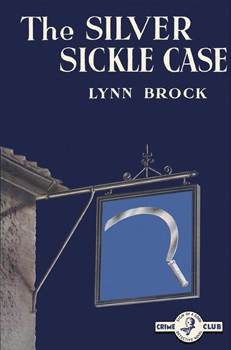
The Silver Sickle Case is a 1938 detective novel by the Irish-born writer Lynn Brock. Best known for his Colonel Gore series of mysteries, the novel introduced an alternative detective character Sergeant Venn of Scotland Yard assisted by Detective Constable Kither. It was followed by two sequels.
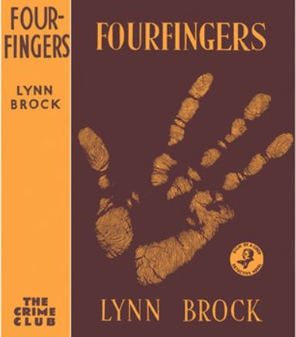
Fourfingers is a 1939 mystery detective novel by the Irish-born writer Lynn Brock. It was the second in his trilogy featuring the characters of Scotland Yard detective Sergeant Venn and Constable Kither. Writing in the Times Literary Supplement, reviewer Maurice Percy Ashley observed "Mr. Lynn Brock’s new book, Fourfingers, good though it is, is so closely written and so full of incident that it is a little heavy going for the reader in search of intellectual relaxation."
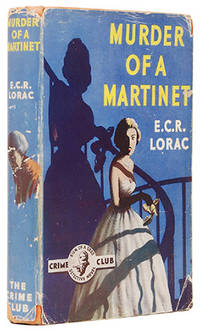
Murder of a Martinet is a 1951 detective novel by E.C.R. Lorac, the pen name of the British writer Edith Caroline Rivett. It is the thirty fifth in her long-running series featuring Chief Inspector MacDonald of Scotland Yard. It was published in the United States by Doubleday under the alternative title of I Could Murder Her.
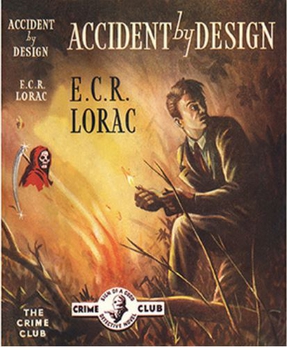
Accident by Design is a 1950 detective novel by E.C.R. Lorac, the pen name of the British writer Edith Caroline Rivett. It is the thirty fourth in her long-running series featuring Chief Inspector MacDonald of Scotland Yard. Like a number of Lorac's works it takes the form of a country house mystery, a popular branch of the genre during the Golden Age of Detective Fiction. Maurice Richardson in an review in The Observer wrote "The usual carefully constructed, rural family murder case which we expect from this eminently trustworthy exponent of the English school of whodunnit."
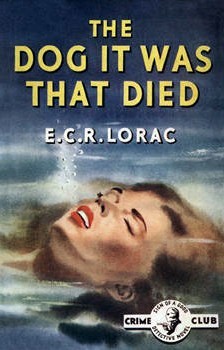
The Dog It Was That Died is a 1952 detective novel by E.C.R. Lorac, the pen name of the British writer Edith Caroline Rivett. It is the thirty sixth in her long-running series featuring Chief Inspector MacDonald of Scotland Yard, one of the more conventional detectives of the Golden Age of Detective Fiction. It was published by the Collins Crime Club.
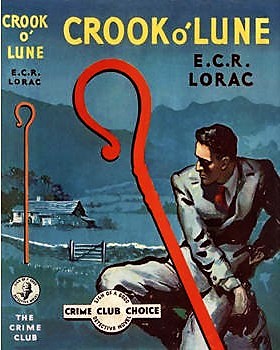
Crook O'Lune is a 1953 detective novel by E.C.R. Lorac, the pen name of the British writer Edith Caroline Rivett. It is the thirty eighth in her long-running series featuring Chief Inspector MacDonald of Scotland Yard, one of the more orthodox detectives of the Golden Age of Detective Fiction. It was published in the United States by Doubleday under the alternative title of Shepherd's Crook.
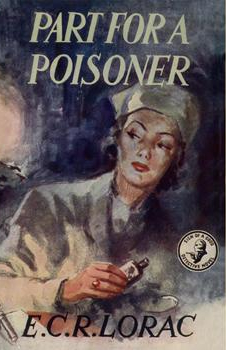
Part for a Poisoner is a 1948 detective novel by E.C.R. Lorac, the pen name of the British writer Edith Caroline Rivett. It is the thirty first in her long-running series featuring Chief Inspector MacDonald of Scotland Yard, one of the more conventional detectives of the Golden Age of Detective Fiction who relies on standard police procedure to solve his cases. It was published in the United States by Doubleday under the alternative title of Place for a Poisoner.

Death Before Dinner is a 1948 detective novel by E.C.R. Lorac, the pen name of the British writer Edith Caroline Rivett. It is the thirtieth in her long-running series featuring Chief Inspector MacDonald of Scotland Yard, one of the detectives of the Golden Age of Detective Fiction who relies on standard police procedure to solve his cases. It was published in the United States by Doubleday under the alternative title of A Screen for Murder.
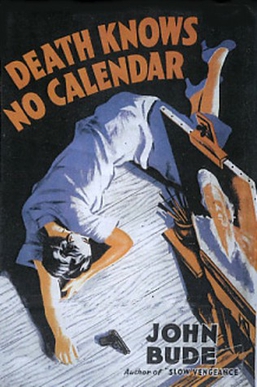
Death Knows No Calendar is a 1942 detective novel by the British writer John Bude. It was a stand-alone novel rather than one featuring his regular detective Superintendent Meredith. In this case the investigation is led by a former army officer Major Boddy. It takes the former of a locked room mystery with a closed circle of suspects, both popular variations of the genre during the period. Originally published by Cassell, in 2020 it was reissued by the British Library Publishing in a single edition with another Bude novel Death in White Pyjamas, as part of a series of republished crime novels from the Golden Age of Detective Fiction.
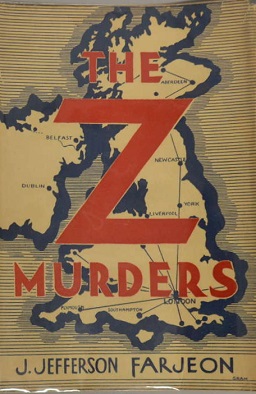
The Z Murders is a 1932 mystery crime novel by the British writer Joseph Jefferson Farjeon. It was originally published by Collins Crime Club, and in 2015 was reissued by the British Library Publishing as part of a group of republished crime novels from the Golden Age of Detective Fiction.

Swan Song is a 1947 detective novel by the British writer Edmund Crispin, the fourth in his series featuring the Oxford Don and amateur detective Gervase Fen. It was the first in a new three-book contract the author has signed with his publishers. It received a mixed review from critics.
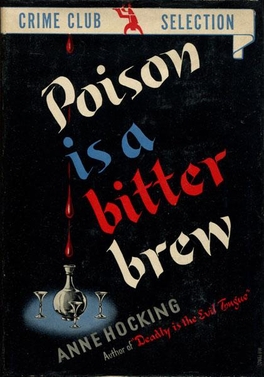
Miss Milverton is a 1941 mystery crime novel by the British author Anne Hocking. First published in London by Geoffrey Bles, it was the third in her series featuring Chief Inspector William Austen as part of the Golden Age of Detective Fiction. It was published in the United States in 1942 by Doubleday under the alternative title Poison is a Bitter Brew.
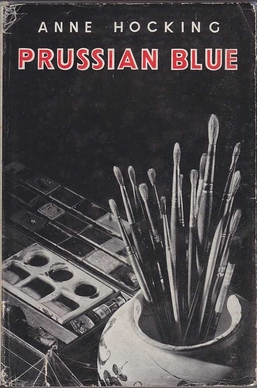
Prussian Blue is a 1947 mystery crime novel by the British writer Anne Hocking. It was her ninth in the series featuring Chief Superintendent William Austen of Scotland Yard. The title refers to Prussian Blue, a blue pigment used by artists. It was published in the United States by Doubleday under the alternative title The Finishing Touch.
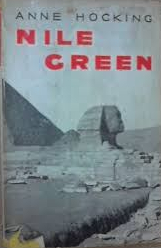
Nile Green is a 1943 mystery detective novel by the British writer Anne Hocking. Written during the Golden Age of Detective Fiction, it is the fifth in her long-running series featuring Chief Superintendent William Austen of Scotland Yard. It was published in the United States by Doubleday under the alternative title Death Loves a Shining Mark.

Mediterranean Murder is a 1951 mystery detective novel by the British writer Anne Hocking. Written during the Golden Age of Detective Fiction, it was the twelth entry in her series featuring Chief Inspector William Austen of Scotland Yard. It was published in the United States by Doubleday under the alternative title Killing Kin.



















